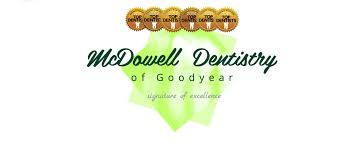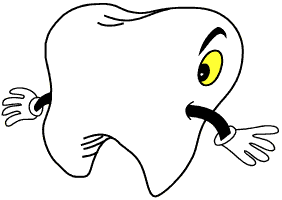|
◄ Back to What´s New At Savon - Monthly Newsletter Home Page
November 2021 Newsletter
What´s New at Savon
Quote Of The Month: “You know that just before the first Thanksgiving there was one wise old Native American woman saying, ‘Don‘t feed them. If you feed them, they‘ll never leave.’” (Dylan Brody - Comedian (1964 - Present)
Congratulations To:
M. Vanhaaften of Mesa, Arizona and J. Tiffany of Apache Junction, Arizona Winners of our October early payment drawings for 1 free additional year of membership.
Congratulations to our winners and thank you to everyone that entered the drawing.
To Your Health With Jourdin Hendershot:
Heartburn
 |
Ouch! It‘s that all too familiar burning sensation within your chest… heartburn!
Don‘t be alarmed! If you suffer from occasional bouts of heartburn, you should be able to manage the pain by using over–the–counter medications. On the other hand, if you suffer from chronic heartburn, you could be in for some serious problems.
Heartburn is a burning sensation behind the breastbone and is often accompanied by a sour taste in the back of the mouth.
Heartburn happens when stomach acid flows up into the esophagus. Normally, acid is kept from entering the esophagus by a muscular valve known as the esophageal sphincter. This valve remains closed until you swallow. However, sometimes when this valve opens, the stomach acid escapes up into the esophagus causing the burning sensation.
Remember when I said if you suffer chronic heartburn, you could be in for some serious problems? Well, this is called Gastroesophageal Reflux Disease (GERD). You can experience the burning sensation along with nausea, sore throat, hoarseness, and a cough. If this is left untreated, it can turn into esophagitis (inflammation of the esophagus) or Barret‘s esophagus (a pre cancerous condition).
|
You may be be wondering what causes heartburn and GERD, right? It‘s usually a result of eating and drinking at the wrong time.
Below is a list of ways to help prevent heartburn attacks:
- Weight Control – Obesity is a major risk factor.
- Avoid triggers – Everyone's body is different but here are a few basic triggers to be aware of:
- Fatty or fried foods
- Alcohol
- Chocolate
- Peppermint
- Caffeine
- Citrus
- Loose clothing – Make sure clothes, including belts are loosened. You do not want to add extra pressure to the stomach area.
- Laying down – Do not lay down for 2 hours after eating. Remaining upright allows gravity to keep acid down. If you do need to lay down after eating, prop your head up 6–8 inches.
- Smoking – Do not smoke! Nicotine increases stomach acid.
- Chew gum – Sugar–free of course! Chewing gum helps promote saliva which helps neutralize stomach acid.
- Medications – Drink plenty of water with any type of medication.
- Antacids – Mylanta, Rolaids, and Tums (just to name a few) can help neutralize stomach acid and it begins to work right away.
If you notice that your heartburn seems to become more frequent or additional symptoms are beginning to arise, it‘s time to be tested for GERD. This test is called an endoscopy. The doctor will insert a tube with a camera on the end through your mouth into your esophagus, this will allow them to view the esophagus and stomach. If needed they may take a biopsy.
GERD is usually treated with prescription medication and a change of lifestyle. In more severe cases, surgery may be needed.
Everyone will experience heartburn at some time in their life, just be aware of the symptoms. If you feel the need, contact your primary care physician for medical advice.
If you have questions you would like to discuss with Jourdin, feel free to drop her an email by clicking here.
The above health material is provided as an information service. It should not be used for diagnostic purposes nor is it intended to take the place of the important relationship between you and your doctor.
Grandma´s Kitchen With Grandma C.:
Crock Pot Italian Sausage & Pepper Dinner
 |
Ingredients
- 1 pkg Italian Sausage
- 1 red pepper
- 1 green pepper
- 1 large yellow onion
- ½ tsp fresh garlic
- ½ tsp Italian Seasoning
- ½ tsp black pepper
- 1 cup garden style chunky marinara sauce (from a jar)
- 1 TBSP olive oil
- ¾ cup shredded Mozzarella Cheese
|
Slice Bell Peppers lengthwise into ¼ inch strips. Dice onion.
Heat a skillet and add 1 TBSP olive oil. Sear the Italian Sausages for 4 minutes, turning every minute just until lightly browned.
Lay the sausages in the bottom of the crock pot.
Put onion and sliced peppers on top of the sausages.
Add garlic, salt, pepper and Italian seasoning over the top.
Pour Marinara sauce over the mixture.
Cook on high for approximately 3–4 hours, or on low for 5–6 hours.
Add Mozzarella cheese in the last hour of cooking, or use it as a garnish when you serve the meal.
This meal can be served over rice or enjoyed on a toasted bun!
Enjoy! And remember, if it looks and smells good, eat it!!
If you have a recipe that you would like to share with Grandma C., drop her an email by clicking here.
 |
| |
McDowell Dentistry Of Goodyear |
 |
Our spotlight for November goes to the city of Goodyear, Arizona and shines on McDowell Dentistry of Goodyear.
Dr. George Ayoub and his staff have been members of the Savon network since 2007. Centrally located in the far west valley, they see patients from Goodyear, Litchfield Park, Avondale and other west valley cities.
Dr. Ayoub earned his DDS degree at University of Southern California School of Dentistry, Los Angeles. Since then, he has earned additional credentials such as a mastership with AAIP (America Academy of Implant prosthodontist) and was voted one of Arizona´s TOP DENTISTS for two years in a row by Phoenix Magazine.
|
Dr. Ayoub says: “I am proud to have served patients in our community. Through continuing education and state-of-the-art equipment, my practice is able to offer you and your family the high level of service you are looking for in dental care. Our team at McDowell Dentistry of Goodyear and I will give you a warm welcome and our ongoing commitment to your dental health.”
The practice is located at 14150 W. Mcdowell Road, Goodyear, AZ. The phone number is (623) 536-2040. Or visit them on the web.
Say thank you to your dental office for the excellent manner in which you are treated by nominating your dentist!
Fun Facts:
Crazy, Zany Facts We Bet You Didn´t Know
 |
- The largest bill to go into circulation in the United States was a $10,000 note.
- The chicken and the ostrich are the closest living relatives of the Tyrannosaurus rex.
- Apple seeds contain cyanide.
- Your body contains about 100,000 miles of blood vessels.
- Almonds are members of the peach family.
- Pogonophobia is the fear of beards.
- To escape the grip of a crocodile‘s jaws, push your thumbs into its eyeballs. It will let you go instantly.
|
Come back for more in next months issue!
Dental Talk - A Member Blog Forum:
 |
Come blog with us! Dental Talk with Savon is a fun forum to post your interesting topics! Your comments are welcome, it´s free to use and no membership is required.
Some of the topics include;
|
These are just a few of the topics. Our blog site contains many other interesting topics. Please join us!!
Here´s Your Answer
Questions From Our Members
J. Hugo of Queens, New York asks:
“Can you please explain what a removable bridge is? My dentist has suggested that I consider one.”
Savon’s Answer
As its name describes, a removable bridge (also called a partial denture) can be taken out of the mouth for cleaning. Although removable bridges generally are less expensive, fixed bridges may feel more stable and comfortable.
Depending on your situation, however, a partial denture may be for you. Working with your dentist, you should be able to determine which type (fixed or removable) is right for you.
Tooth Talk With Tommy The Wisdom Tooth
Patients See The Dentist Less Often After A Hospital Stay
A direct reprint of an article by Hannah Madans, DrBicuspid.com contributing writer
 |
Patients are less likely to visit a dentist after a hospital stay, according to a study published in the Journal of the American Dental Association. They are slightly less likely to undergo certain types of dental procedures, including periodontic, endodontic, and oral surgery services.
Poor oral health is connected to worse outcomes for hospitalized patients. As a result, the authors of the report sought to better understand how hospital admission affects future dental services.
"Owing to both shared risk factors for medical and dental disease, as well as the impact of acute illness on access to care, hospitalized patients have been found to have worse oral health than their community-dwelling peers," wrote the group, led by Dr. Lisa Simon, a dentist and physician at the Harvard School of Dental Medicine and Harvard Medical School (JADA, September 3, 2021).
|
Researchers looked at a decade's worth of insurance claims data from a national insurance provider, focusing on patients who were admitted to the hospital and visited a dentist at least once in the year before the hospital admission. In total, 107,116 patients met the inclusion criteria.
Nearly two-thirds of hospital inpatients were admitted for surgical procedures. They had a median hospital stay of two days, and the most common diagnoses were osteoarthritis, appendicitis, obesity, depression, and leiomyoma of the uterus.
Patients had a mean of 1.9 dental visits in the year before they were admitted to the hospital, compared with 1.6 dental visits in the year after discharge. That totaled to nearly 35,000 patients who had a dental visit the year before admission but not the year after their hospital stay.
In addition to fewer patients seeing a dentist, those who did underwent fewer coded procedures. Analyzing Code on Dental Procedures and Nomenclature (CDT Code), dentists billed the patients for an average of 8.2 CDT codes before their hospital stay, compared with 7.0 codes afterward.
While patients received a high percentage of diagnostic, preventative, and restorative services in both time periods, the rates of other procedure types changed slightly. After a hospital stay, the number of periodontic, endodontic, oral surgery, and prosthodontic services dropped.
"Among privately insured patients with at least 1 dental visit in the year before or after a hospital stay, dental services use was lower in the 12 months after hospital discharge than in the 12 months preceding hospitalization," Simon and colleagues wrote. "Types of procedures that those who did visit a dentist underwent were largely unchanged."
It's important to note that the study only included patients with private insurance, who are at a lower risk of experiencing poor oral health outcomes. The patients studied were also younger than the mean age of people admitted to the hospital, and the research did not account for dental visits paid for out of pocket.
Also, the long-term health and cost implications of a dip in dental services after hospitalization are still unknown. In fact, the authors concluded that hospital admission or illness episodes should be a risk factor for patients falling out of care.
To prevent such a lapse in dental care, they suggested implementing efforts to enhance oral healthcare delivery and counsel patients about dental services in the time frame immediately around their hospital stay.
"There have been initiatives, albeit of limited scope, to integrate dental care providers into inpatient medical teams, and oral health care ranging from prophylaxis and scaling to tooth extraction has been delivered safely at the bedside," they wrote. "However, few of these programs have expanded beyond the pilot phase, and such efforts have been disrupted due to the COVID-19 pandemic."
Until next time; brush, floss and keep smiling!
The above material is provided as an information service and is not intended as medical advice.
|
|







